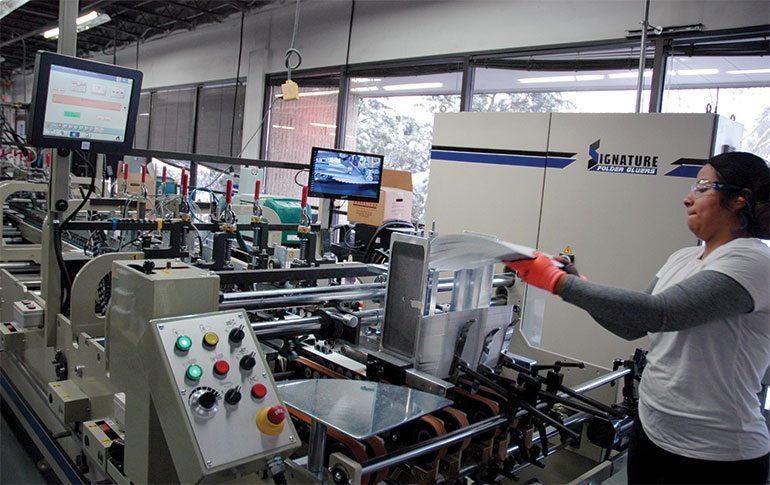Letterhead Press Inc.
16800 W. Ryerson Road, New Berlin
Industry: Commercial printing and packaging
Employees: 175
www.letterheadpress.com
Some companies focus on producing a small number of products in high volumes, driving costs down by having expertise in particular processes. Others focus on shorter runs and custom work.
New Berlin-based Letterhead Press Inc. manages to occupy both those spaces, producing everything from a short run of distinctive business cards to direct mail jobs with millions of pieces.

The company, founded in 1984, specializes in adding value to commercial printing and packaging jobs. That includes foil stamping, embossing and creating unique constructed packages. Letterhead Press products include direct mail, packaging, point-of-sale displays and jigsaw puzzles.
“We can transfer what we’ve learned from the big Fortune 500 companies to a design company that wants to create a unique brochure that sets them apart from somebody else,” said Dick Reindl, vice president of sales.
Reindl joined Mike Graf, Letterhead Press president, a few years after he started the company. Letterhead Press initially focused on business communication products but made a name for itself producing a magazine cover for National Geographic that featured a hologram skull.
Letterhead Press’ capabilities offer customers more options beyond additional colors or specialty papers. While shorter runs can include the full range of capabilities and are more complex, the larger projects typically don’t include quite the same variety.
The company also maintains a wide variety of machinery to handle the range of projects.
“The beauty of the variety is when one area is slow, another area is busy,” Reindl said.
But arriving at its current point took time. Reindl said the company and the industry have lost plenty of work to Chinese competitors. Letterhead Press had to learn how to compete against China, and did so by implementing automation and cutting out inefficiencies.
“A lot of packaging has gone over to China and now has come back. A lot of that has to do with the quality and good communications. There’s no surprises when you’re doing things here and we’re able to turn things in just-in-time fashion,” Reindl said.
Letterhead Press sent a number of top executives through lean manufacturing training around 2010 and then brought the classes to all of its employees in a condensed fashion. The company hired a continuous improvement manager to handle initiatives and opted to pursue Safe Quality Food certifications, opening up new markets.
“A year does not go by without us doing three or four major projects that make us more profitable, more efficient, cleaner, better,” Graf said.
Some of the recent projects have focused on making the company’s 130,000-square-foot facility greener. Energy consumption has been reduced by 40 percent during a period of 25 percent growth, with efforts including lighting changes and recirculating heat from equipment.
Letterhead Press also generates 25 percent of its energy from a solar array located behind the building. It’s the seventh largest array in the state and a display in the front lobby shows employees and visitors daily, monthly and yearly energy production totals.
The goal is to become 100 percent self-sufficient for energy, Graf said. How to achieve that is a bit of an open question, but he said it could include battery storage and other power generation methods.
About 30 percent of each year’s profits are invested back into Letterhead Press’ equipment. Graf said part of the challenge is to continue to search for more markets and more customers.
While the shift to digital has hurt the commercial printing side of the business, the rise of online retailers has, in some ways, increased the importance of packaging.
“Consumers still want catalogs, they still want to touch and feel something that’s not just an electronic image on a screen,” Reindl said. “Plus once they receive their products, say from Amazon, it needs to be packaged correctly so it conveys the branded message to the consumer.”

